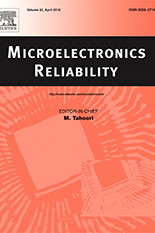News Story
“Effective Decapsulation of Copper Wire-bonded Microelectronic Devices for Reliability Assessment” Available for Free Online

Subramani Manoharan, Ph.D. Candidate, Dr. Chandradip Patel, CALCE Alum, Professor McCluskey, and Professor Pecht have co-authored a new article “Effective decapsulation of copper wire-bonded microelectronic devices for reliability assessment,” which is now available online for free until May 26 with Elsevier Press. No sign up, registration, or fees are required to access this article.
Abstract
The wire bonding industry has made a major shift in wire materials from gold to copper, primarily due to cost concerns. Copper wire-bonds are now present in many commercial off-the-shelf (COTS) devices but minimally used in automotive, industrial, or military-grade applications due to lack of detailed understanding about reliability concerns. A thorough study of wire bond reliability includes performing bond shear and pull strength measurements before and after stress testing. This in turn requires a special decapsulation procedure for copper wire-bonded devices because, unlike gold, copper is chemically potent. Many techniques for copper wire-bonded device decapsulation exist and can be categorized into laser-, plasma-, and acid-based processes. This paper reviews some of these techniques and discusses the decapsulation mechanism, which involves decomposition of the epoxy resin. By understanding the decapsulation mechanism and available techniques, a unique decapsulation method was developed. The effectiveness of this method is presented along with scanning electron microscopy (SEM) images of the results, which indicate minimal etching of copper wire bonds. The critical parameters of this technique are also identified, a suitable range of input for each parameter is analyzed theoretically, and a design of experiment (DOE) is conducted to find optimal values for each parameter. Several SEM images are provided to show both the good and bad results from the DOE. An image method for measuring effectiveness of decapsulation is also presented.
Please follow this link for the full article as made available, for free, by the publisher.
Subramani Manoharan is a PhD student in the CALCE team majoring in Mechanical Engineering at the University of Maryland. His research focuses on electronics packaging with emphasis on interconnect technology such as wire bonding, lead-free solder, and underfills for industrial and commercial applications. He is member of ASME, IMAPS, and IEEE.
Chandradip Patel is former CALCE student and research assistant. He earned his Mechanical Engineering PhD from the University of Maryland with a focus on the assessment of micro-electrical mechanical systems and lead-free interconnect for high-temperature environments. He currently a technology engineer with Schlumberger.
Published April 6, 2018




